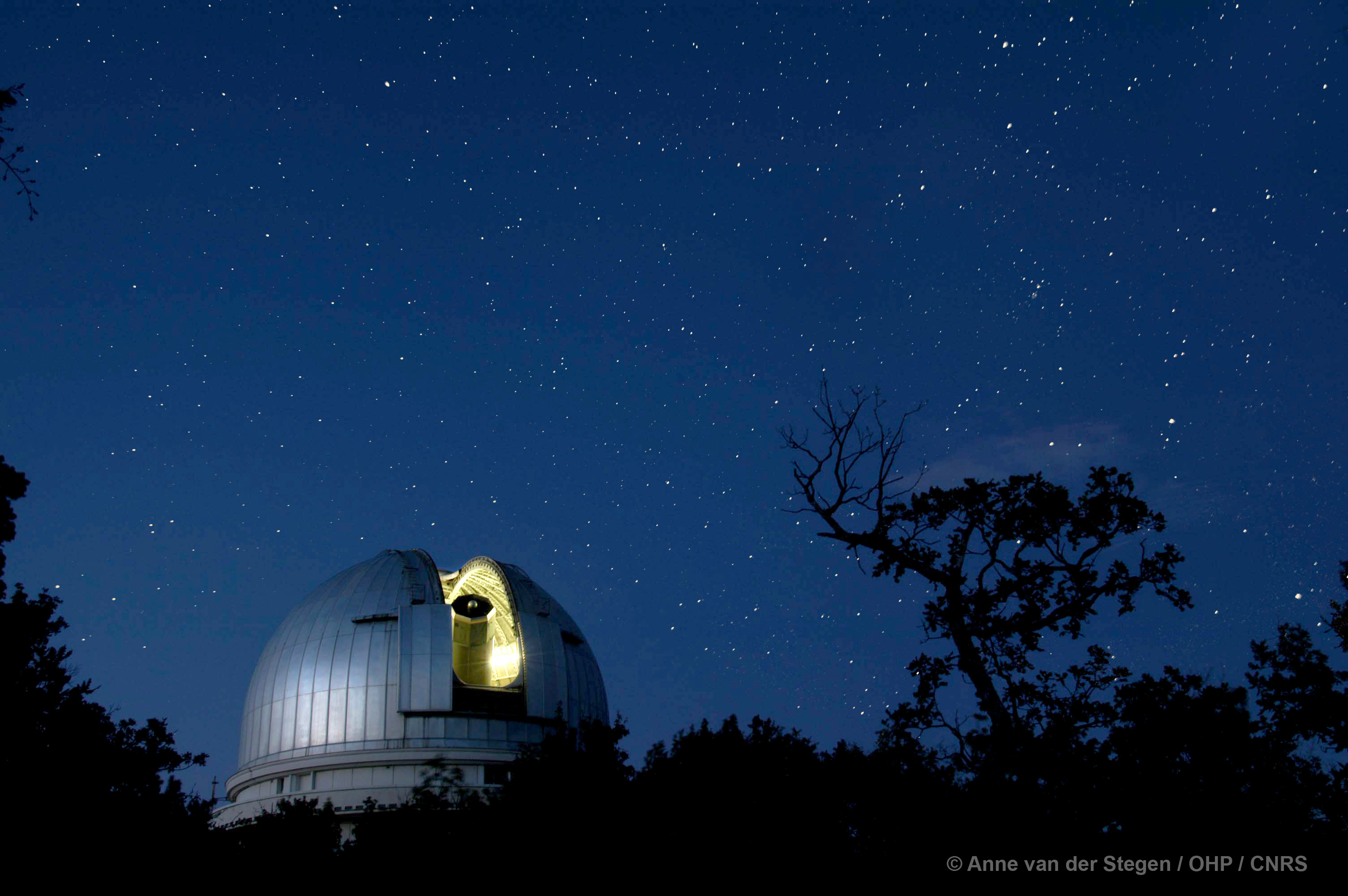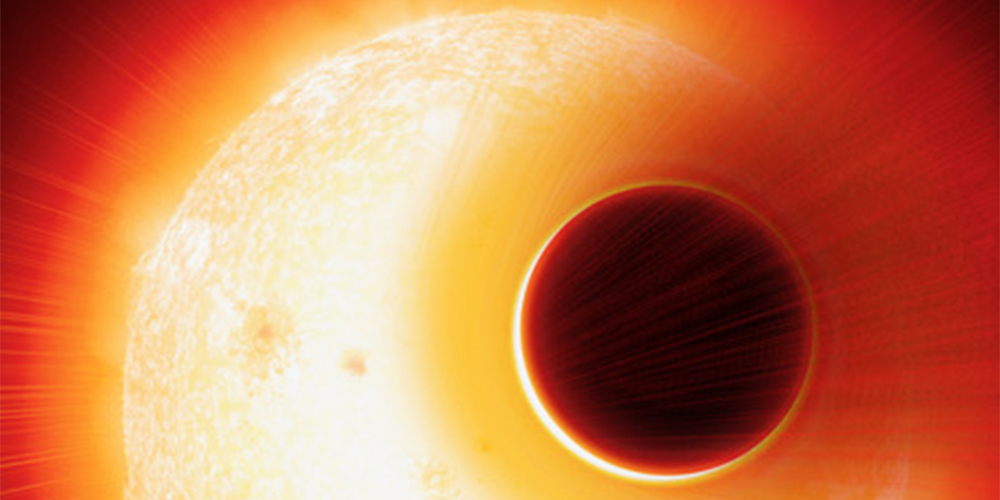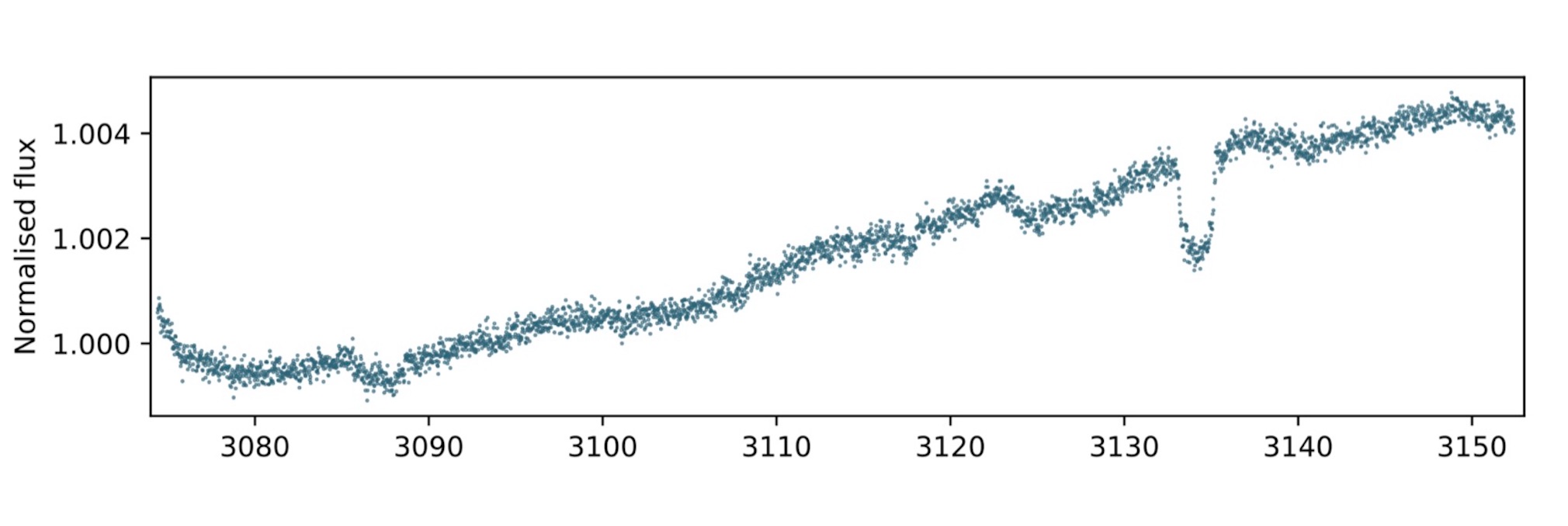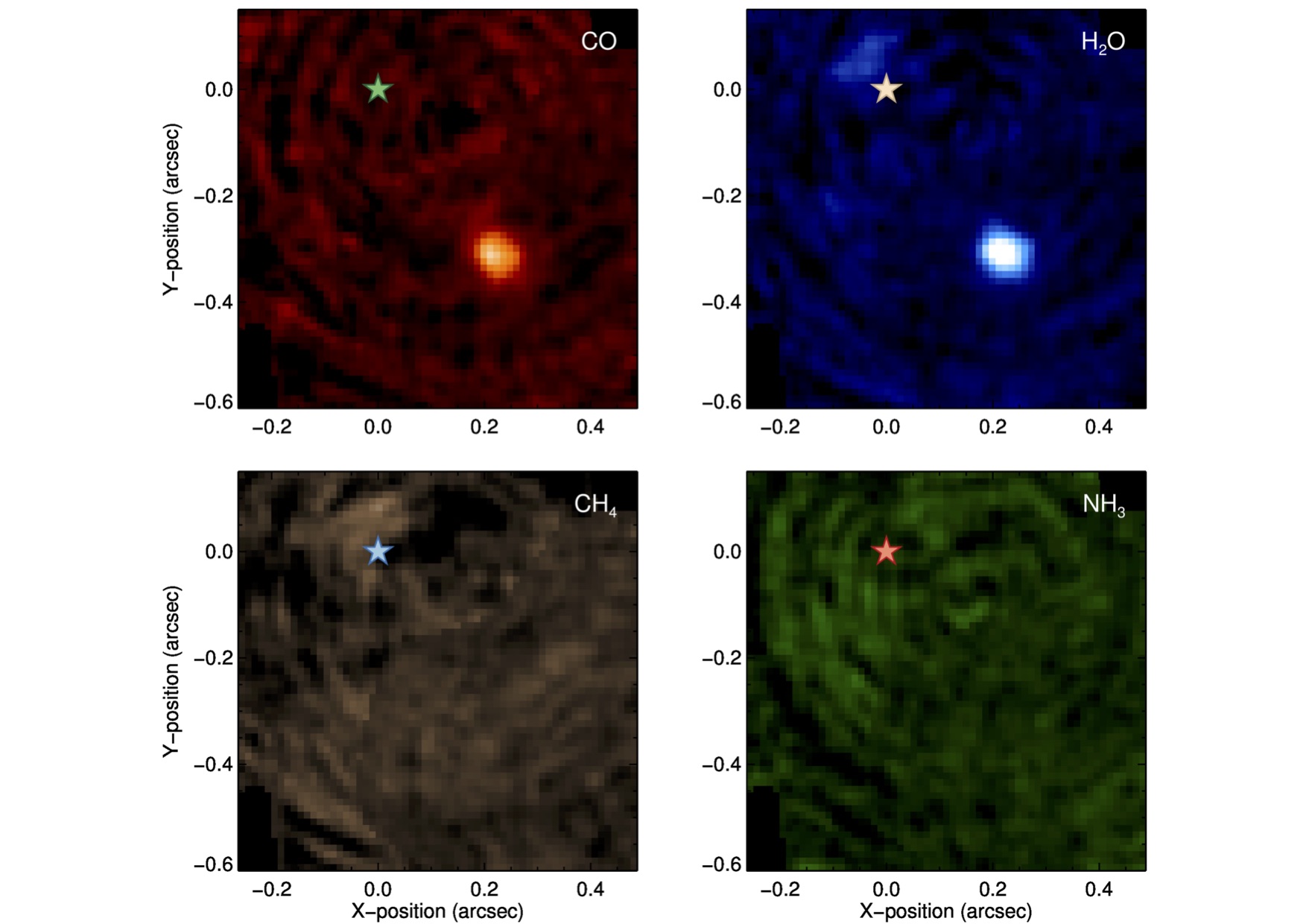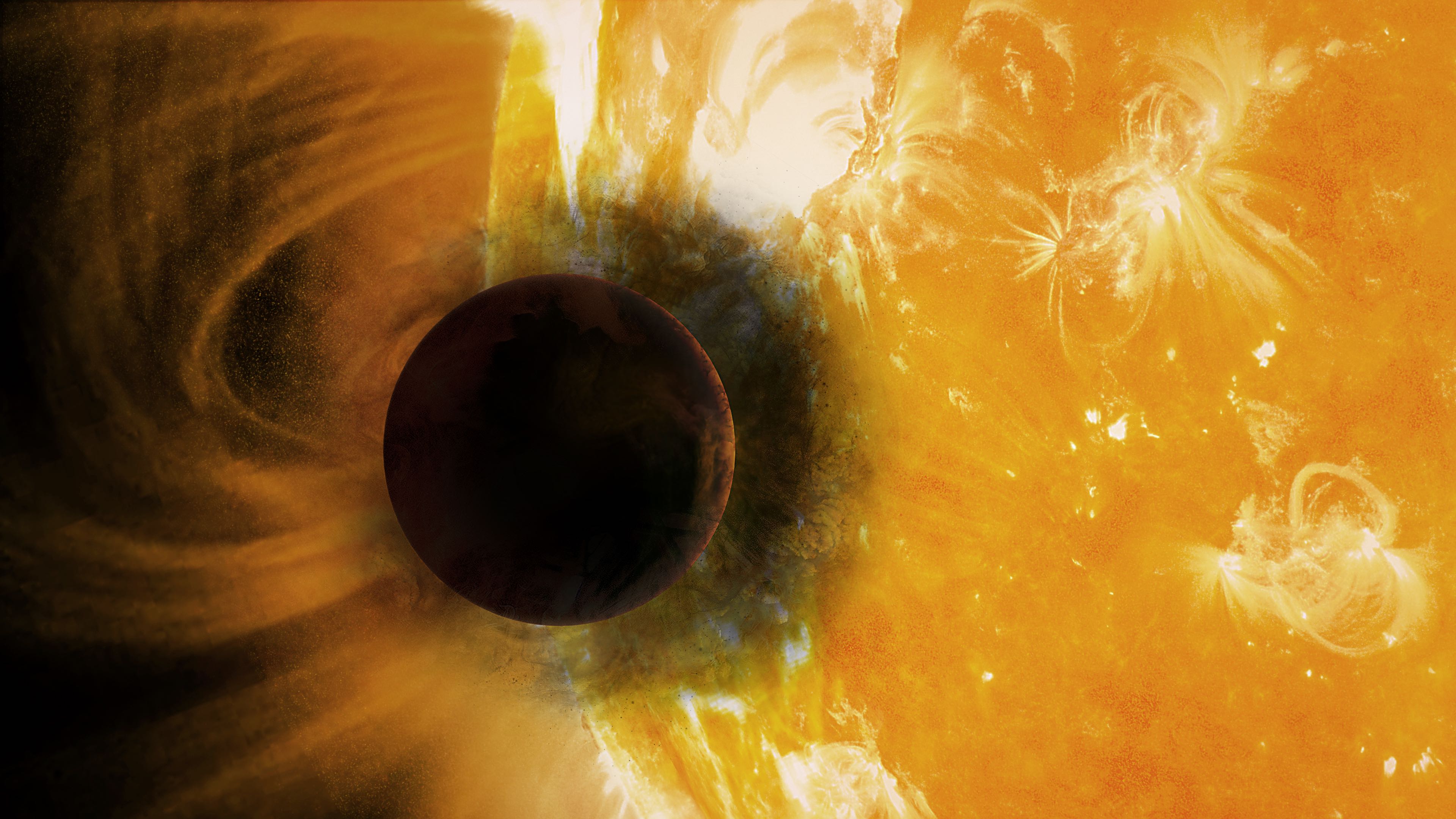Author Archive
‘Forbidden’ planet found in ‘Neptunian Desert’
For the first time, an international team of astrophysicists, including members of PlanetS, discovered a new kind of exoplanet in the Neptun desert, an area where no such exoplanet had been identified to date. An international team of astronomers, leading by the Warwick University and including members of PlanetS, have found a “forbidden” planet three times […]
Continue ReadingRare-Earth metals in the atmosphere of a glowing-hot exoplanet
KELT-9 b is the hottest exoplanet known to date. In the summer of 2018, a joint team of astronomers from the universities of Bern and Geneva and members of PlanetS found signatures of gaseous iron and titanium in its atmosphere. Now these researchers have also been able to detect traces of vaporized sodium, magnesium, chromium, […]
Continue ReadingFive planets revealed after 20 years of observation
A team of astronomers led by members of PlanetS has discovered five new planets with periods of revolution between 15 and 40 years. It took 20 years of regular observations to achieve this result. Over 4000 exoplanets have been discovered since the first one in 1995, but the vast majority of them orbit their stars […]
Continue ReadingA sister of the Earth in a nearby system
Barely three times larger than the Earth, this new planet is the third closest to our solar system ever discovered. An international team of astronomers, including researchers from the University of Geneva and PlanetS, has discovered the third closest exoplanet to our solar system. This detection was obtained thanks to the SOPHIE spectrograph, developed in […]
Continue ReadingA planet inflated like a balloon
Researchers from UNIGE and members of the NCCR PlanetS have found helium in the atmosphere of an exoplanet, swollen like a balloon. Although helium is a rare element on Earth, it is ubiquitous in the Universe. It is, after hydrogen, the main component of stars and gaseous giant planets. Despite its abundance, helium was only […]
Continue ReadingFinding a planet with a 10 years orbit in a few months
The method of transits, consisting of detecting a dip in the luminosity of the host star at the time the planet passes, is a very effective technique to search for exoplanets. It makes it possible to estimate the radius of the planet, the inclination of the orbit and can be applied to a large number […]
Continue ReadingHunting molecules to find planets
Each exoplanet revolves around a star, like the Earth around the Sun. This is why it is generally impossible to obtain images of an exoplanet, so dazzling is the light of its star. However, a team of astronomers, led by a researcher from the University of Geneva (UNIGE), had the idea of detecting certain molecules […]
Continue ReadingFirst detection of Helium in an exoatmosphere
For the first time, an international team of astronomers including members of PlanetS has detected helium in an exoplanet’s atmosphere. Early theoretical models predicted helium to be among the most readily-detectable species in the atmospheres of exoplanets, especially in extended and escaping atmospheres. However, searches for helium have been unsuccessful until now. By measuring the […]
Continue ReadingESPRESSO: first time with the 4 UTs of the VLT
The membres of the ESPRESSO team announced that the first light of ESPRESSO with the four VLT 8.2-meter Unit Telescopes (4UT mode) took place on Saturday February 3rd, 2018. The ESPRESSO team had been granted a half night of the 4UT mode by ESO, and it started with a cloudy sky, generously offered by the […]
Continue ReadingOrbital mayhem around a red dwarf
Astronomers members of PlanetS, discovered that the GJ436b, nicknamed “the comet-like exoplanet” because it evaporates like a comet, follows a very special elliptical orbit over the poles of its star. In the collective imagination, planets of a solar system all circle around their star, in the same plane that is also the equatorial plane of […]
Continue Reading



